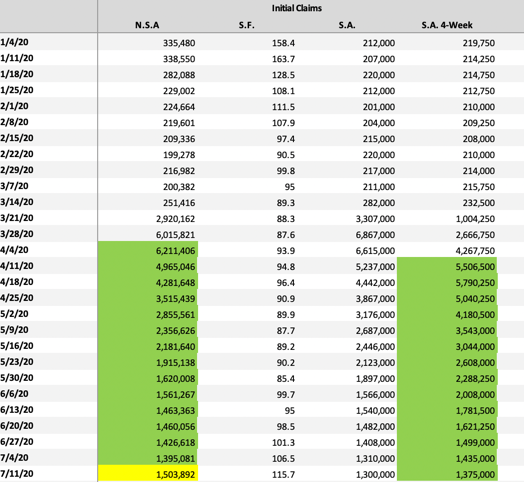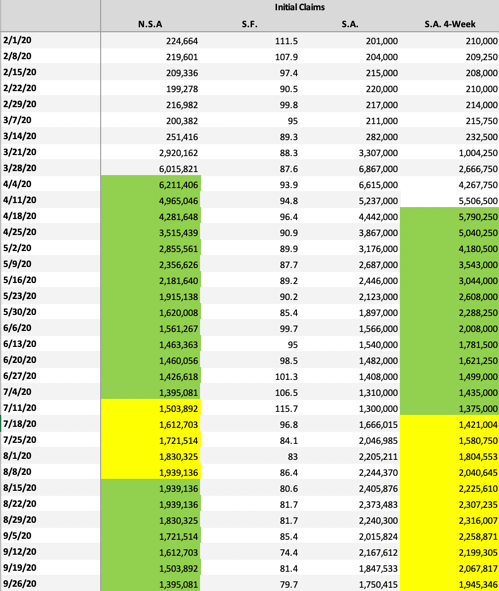Why initial jobless claims are going to go through the roof
I did a quick experiment with US initial jobless claims for my colleagues at Real Vision for today’s Daily Briefing. And because the results were so interesting, I thought I’d post them here despite having just posted earlier this morning.
Here’s what I did.
I looked at the historical data for initial claims and color coded the raw numbers and the seasonally adjusted 4-week average numbers for the period after they rose to the record level above 6 million. Green showed numbers coming down and yellow showed numbers rising. All of the numbers are green except last week’s raw number.

So, you know what you’re seeing, the columns are:
—Not Seasonally Adjusted (Count)
—Seasonal Adjustment Factor
—Seasonally Adjusted (Count)
—Seasonally Adjusted 4-Week moving average
Then I asked myself the following question: what happens if claims continue to increase as much as they did the past week?
So I added four more weeks of rising claims to the data set, followed by 2 weeks of stasis and 5 weeks of declining claims. The rise and fall was exactly the same between weeks as it was between the last historical data week and the one prior.
The key here is that the seasonal adjustment factor makes a huge swing in the next couple of weeks. And that means average seasonally-adjusted initial claims rise by an absolutely massive amount, peaking at over 2.3 million.

Then, I looked at the numbers if they just flatlined from here. And the seasonal factors overwhelmed the raw numbers. Here again, despite not actually rising, they rose by a massive amount, though not as much.

Bottom line: Initial jobless claims are likely to surge in the coming weeks irrespective of the facts on the ground. The seasonal adjustments are dominating the data flow. If you are just reading the headlines and not looking at the actual data, you won’t know what’s happening. But, we need to prepared for these numbers to make headlines, because after weeks of falling, initial jobless claims in the US are going to spike by a lot.
Comments are closed.